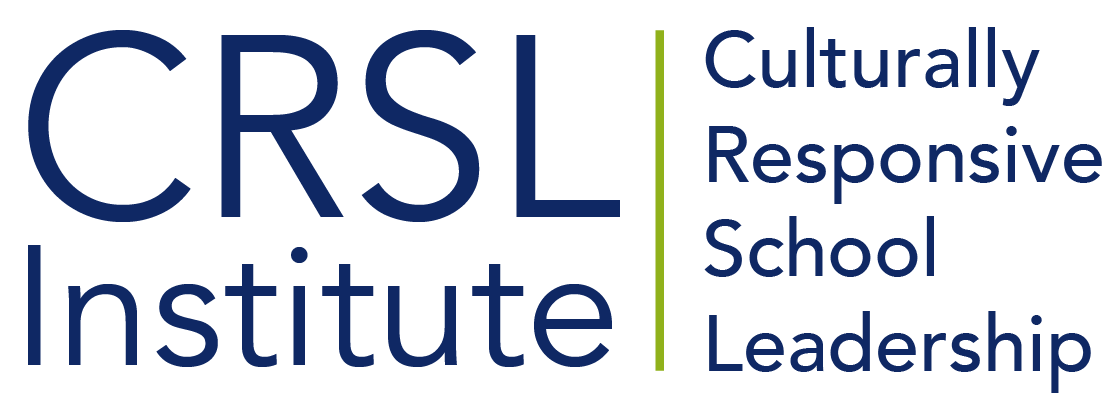Oct 1
Research Brief: The Color of School Discipline
The Achievement Gap and the Discipline Gap: Two Sides of the Same Coin?
Anne Gregory, Russell J. Skiba, and Pedro A. Noguera
Research Topic
The research highlighted in this article focuses on school disciplinary interventions and how classroom exclusionary practices may be contributing to the K- 12 “Achievement Gap.”
Key Findings
The key findings suggest that Black students are two to three times more likely to be suspended from school compared their White and Asian counterparts. The author continues that there is a strong correlation between time engaged in academic learning and student achievement, but Black and Latino males are at a particular risk for classroom exclusionary practices. Thus making it more likely, that these students will display behaviors of academic failure, disengagement, and escalating rule breaking. Finally, the author finds that school administrators must apply a multi-layered strategy when beginning and throughout the process of ameliorating bias in their systems. There was no single causal factor can fully explain differences in racial bias. Thus the solution has to be multifaceted.
Implications and Keys to Reform
- Administrators should try to increase system awareness for potential discipline bias in their classroom and enhance the range of consequences deployed when responding to behavior problems.
- Administrators must be able to separate issues of race and culture when dealing with disciplinary disparities, some disruptions by a student may be a cultural (race, class, and age) miscommunication.
- Use exclusionary practices as the last resort rather than the first or only option.
- Mental Health services for students who have been exposed to neighborhood violence or substance abuse may be an alternative technique to exclusionary practices in schools.
- Make a concerted effort to understand the roots of behavior problems
- School administrator must find methods of reconnecting students to the educational mission of their school during disciplinary events.
Follow us on social
Empty space, drag to resize
Where we are
1041 Grand Ave Box #276
St. Paul, MN 55105
612.584.9478
info@crsli.org
St. Paul, MN 55105
612.584.9478
info@crsli.org
Featured links
Policy Pages
Connect with us
Subscribe to our email list
Thank you!
Copyright © 2024
Empty space, drag to resize

Empty space, drag to resize
Muhammad Khalifa, PhD
President and CEO
Dr. Muhammad Khalifa is a professor of educational administration and Executive Director for Urban Education Initiatives at the Ohio State University. Before coming to OSU, Dr. Khalifa held the Robert Beck Endowed Professorship in the Department of Organizational Leadership, Policy, and Development at the University of Minnesota, Twin Cities. Having worked as a public school teacher and administrator in Detroit, Dr. Khalifa's research examines how urban school leaders enact culturally responsive leadership practices. His latest book, Culturally Responsive School Leadership (2018) was published by Harvard Education Press. He has led equity audits in U.S. schools as a way to reduce achievement and discipline gaps, and he is the first to develop and use online Equity Audits for schools. In addition to his urban work in the U.S., Dr. Khalifa has engaged in school leadership reform in African and Asian countries, including a recent U.N. project in East Africa.
Empty space, drag to resize
Empty space, drag to resize

Empty space, drag to resize
Darlinda Anderson
Senior Vice President
Darlinda Anderson serves as the senior vice president of Ajusted Equity Solutions/CRSLI. Her role within the organization is to charter leadership, organizational objectives, sustainable strategy, and advantageous expansion. For the last twenty years, she has worked in human resource management, K–12 education, and process-led project management. Overall, Darlinda’s passion for balance and equity in the service of societal disparities—especially those in disadvantaged groups and professions—was the start of her overarching search for finding and supporting an organization that creates long-term sustainable opportunity for disadvantaged minorities.
Because of her passion for systems and organizational development, after graduating from Purdue University, Darlinda went to work for Hewitt Associates, a global leader in human resources outsourcing and programmatic financial services. This was her segue into the fields of project management, education, interactive broadcast media, and marketing. Though she initially started in business within the healthcare sector, it allowed her to realize how deeply she loved working in the service of others and for an equitable cause. This was the beginning of her journey to earning her master's in educational leadership. As her multiple career paths progressed, Darlinda searched for an opportunity to serve with the US government agency Americorps. There, she completed her educational service through Teach for America. Darlinda continued to serve as a K–12 public education teacher after her initial service to Americorps ended for another ten plus years.
As a classroom teacher, Darlinda saw firsthand all the struggles that Title I schools faced. After becoming a department chair, she began studying full-time to earn her master’s of business administration in human resource management. She continued to seek out opportunities beyond the classroom, where she knew she’d be closer to influencing systematic and district-level change. She continued navigating impactful roles that affected internal shifts, which led to working as a district program manager for a few years and later leading as a director of programs over the span of the next few years in educational organizations across the country. Today, her overall goal is to continue to serve, cultivate, and create world-changing avenues that make far-reaching equitable ideals a reality.
Empty space, drag to resize
Empty space, drag to resize

Empty space, drag to resize
Empty space, drag to resize
Jessica Schrody
Marketing Administrative Specialist
Jessica Schrody, born and raised in Los Angeles, California, is a professional with a passion for digital storytelling and online marketing since 2017. Focused on social media, she crafts engaging narratives that captivate audiences and drive business success.
Beyond her digital expertise, Jessica has a solid background in customer service and a talent for high-ticket, high-volume sales. Her commitment to excellence and dynamic range of skills make her a valuable asset who routinely contributes to the company’s growth.
Empty space, drag to resize
Empty space, drag to resize

Empty space, drag to resize
Katie Pekel, EdD
Co-Director CRSLA
Dr. Katie Pekel, is the Principal in Residence for the University of Minnesota. In this role Dr. Pekel serves as the department’s direct connection between the fields of research and practice in PK-12 education. She leads the Minnesota Principals Academy, co-directs the Urban Leadership Academy, developed the University’s District Leadership Academy with Dr. Kim Gibbons and the Culturally Responsive School Leadership Academy with colleague Dr. Muhammad Khalifa. Dr. Pekel also serves as a graduate coordinator or the Educational Policy and Leadership track within the Department of Organizational Leadership, Policy and Development. She teaches courses for aspiring school principals and doctoral students and coordinates the Executive PhD cohort for educational leaders. Dr. Pekel has also worked with the University’s College Readiness Consortium guiding school principals and leadership teams from over 150 schools across Minnesota on their implementation of Ramp-Up to Readiness™, the University’s school-wide college readiness program for students in grades 6-12. Dr. Pekel has served at all levels of K-12 education first as a high school English teacher, as an elementary principal and most recently as a middle school principal for six years in Austin, MN.
Empty space, drag to resize
Empty space, drag to resize

Empty space, drag to resize
Maggie Smith-Peterson, PhD
Director of Instructional Design & Learning
Maggie Smith-Peterson is the Director of Instructional Design & Learning for the Culturally Responsive School Leadership Institute and leads projects focused on the creation and expansion of learning experiences, services and tools for developing socially just and racially equitable leaders and school systems. Maggie has served as an elementary classroom teacher, specialist/coach, adjunct professor, district program facilitator, and professional learning designer in a variety of school systems and organizations, including New York City Public Schools, St. Paul Public Schools, Minneapolis Public Schools, the University of Minnesota, and the University of St. Thomas. Maggie holds an M.S. and an M.A. in education, and received her Ph.D. in Curriculum and Instruction from the University of Minnesota. As a scholar, she studies social justice issues in gifted education and advanced academics with a particular focus on the history of scientific racism and its implications for structural reproduction. As a designer, Maggie specializes in visual and multimedia design, UX/LX research and design, and learning technologies.
Empty space, drag to resize
Empty space, drag to resize

Empty space, drag to resize
Noor Doukmak, PhD
Director of Operations & Community Partnerships
Noor Doukmak is the Director of Operations & Community Partnerships at the Culturally Responsive School Leadership Institute. She channels her passion for educational equity and excellence into creating research-based content for practitioners, collaborating with school and district leaders to support their equity initiatives, and facilitating smooth operations across CRSLI’s projects.
Noor leverages her diverse background as a high school math educator, university instructor, editorial assistant, and education researcher. She earned her PhD in Education Policy, Organization and Leadership from the University of Illinois Urbana-Champaign, where her research focused on community-organized education.
Empty space, drag to resize
